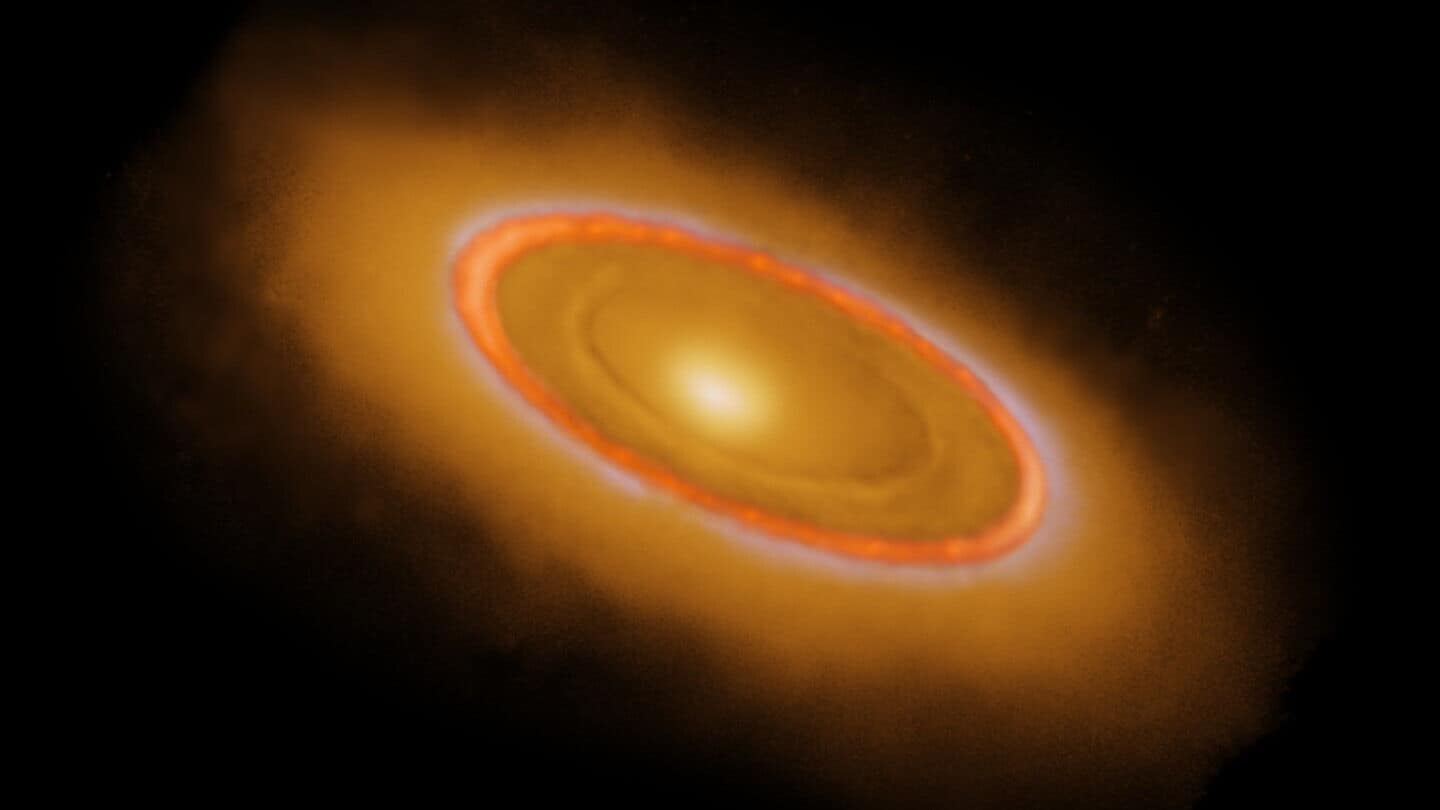
This was how debris disk around Fomalhaut star was formed
What's the story
Astronomers have used the Atacama Large Millimeter/submillimeter Array (ALMA) to capture the highest resolution image of Fomalhaut's debris disk. The image reveals new details about the unique structure of this cosmic feature, which is a huge belt of dust and rocky bodies similar to our solar system's asteroid belt but much larger. The eccentricity or lopsidedness of Fomalhaut's disk has intrigued astronomers for nearly two decades.
Research breakthrough
Eccentricity varies with distance from the star
An international team of astronomers from the Center for Astrophysics | Harvard & Smithsonian and Johns Hopkins University has published two papers in The Astrophysical Journal and The Astrophysical Journal Letters. They found that Fomalhaut's disk isn't just eccentric, its eccentricity varies with distance from the star. This new data-driven model shows that the disk's shape becomes less stretched (or less eccentric) as you move away from Fomalhaut, indicating a negative eccentricity gradient.
Planetary influence
A massive planet may reside within Fomalhaut's disk
The negative eccentricity gradient observed in Fomalhaut's disk could be a result of gravitational interactions with unseen planets. The new model suggests that a massive planet within Fomalhaut's disk may have shaped its eccentricity profile early in the extrasolar system's history. This unique shape of the debris disk might have formed during the protoplanetary disk phase and has been maintained for over 400 million years, thanks to this planet's continued influence.
Model validation
New model offers insights into debris disk dynamics
The research team used high-resolution ALMA pictures at 1.3mm wavelengths to develop a new model that accounts for the disk's radius, width, and asymmetries. The best-fitting model indicated a steep decline in eccentricity with distance from the star, as predicted by dynamical theories of how planets shape debris disks. This new approach offers valuable insights into the history and current state of this dynamic system.